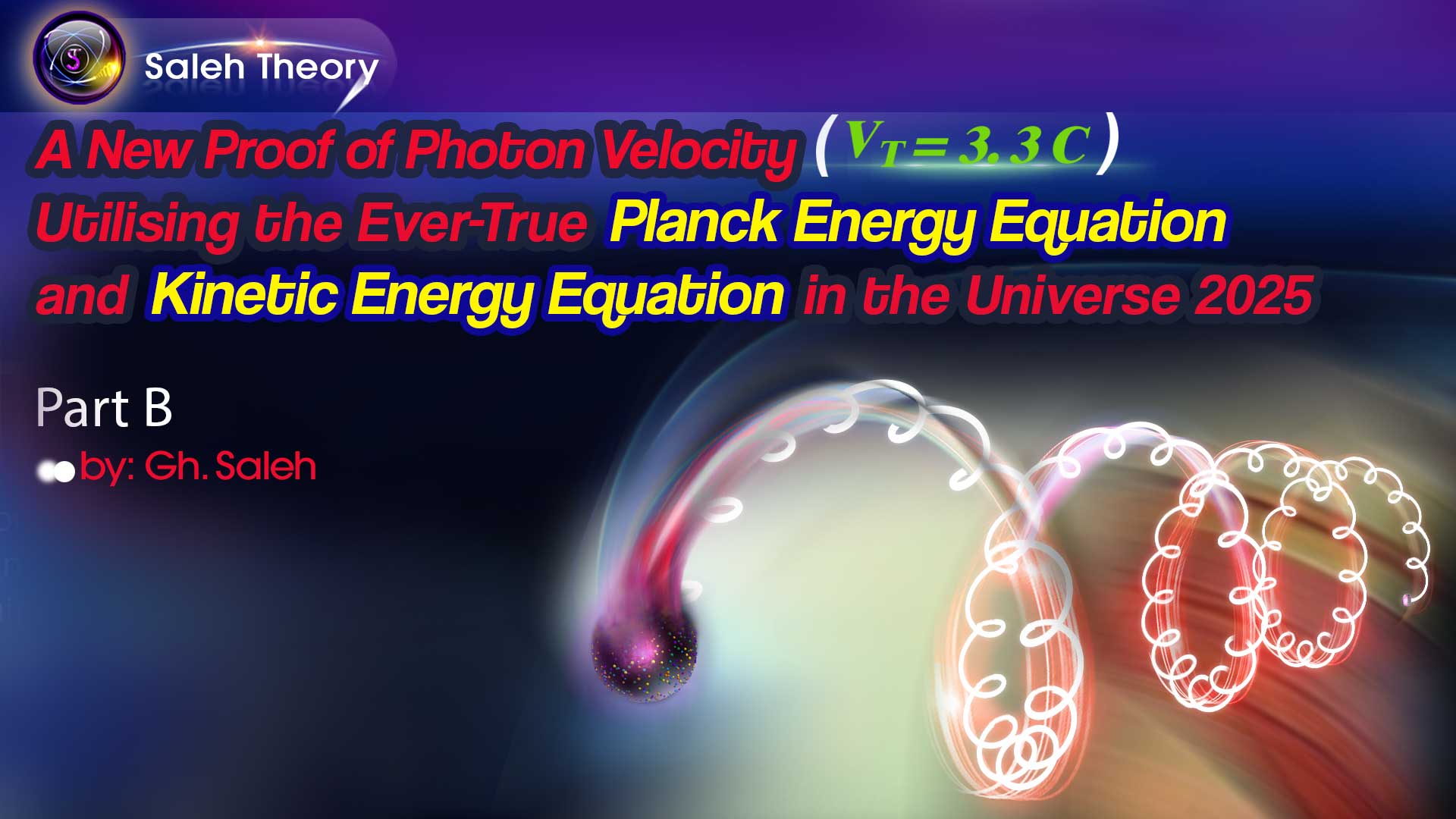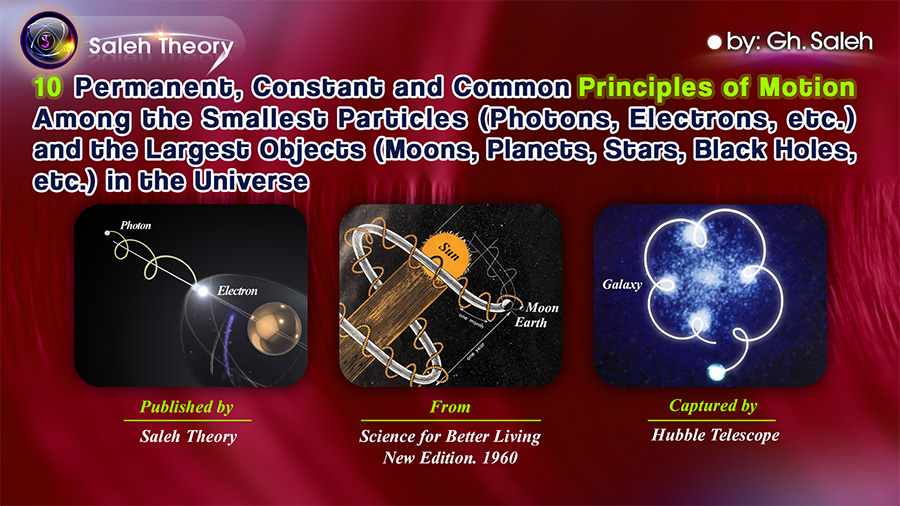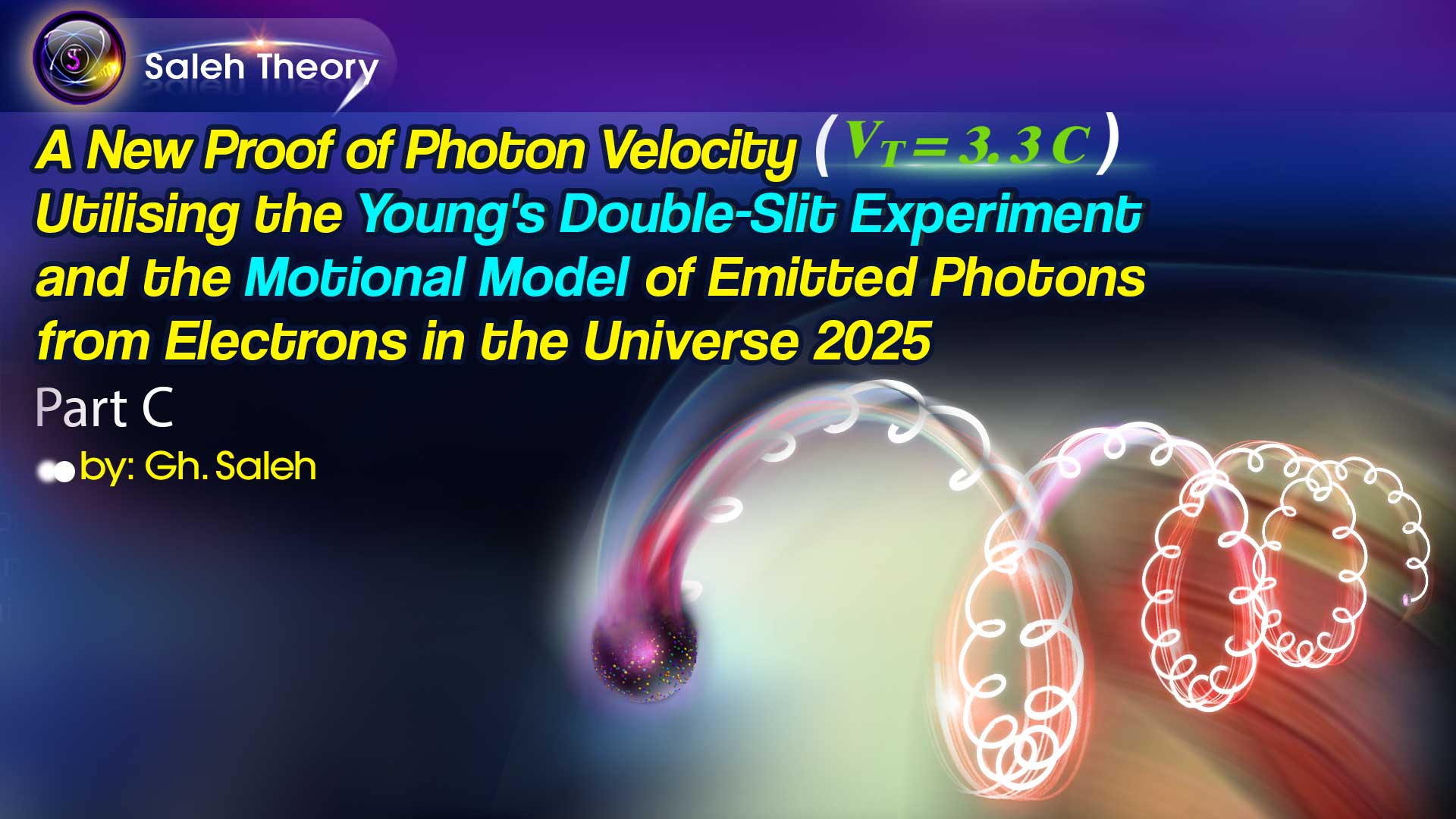
A New Proof of Photon Velocity (VT = 3.3 C) Utilising the Young's Double-Slit Experiment and the Motional Model of Emitted Photons from Electrons in the Universe 2025 Part C
Since Young’s double-slit experiment is a well-established and widely accepted demonstration of the wave-like behavior of light (electromagnetic radiation), investigating the underlying cause and the nature of this wave propagation necessitates an analysis of the source from which the radiation originates.
If we're looking for the source of a photon's production, it's plain as day that the source is an excited electron within an atom. Although when a photon is emitted from an electron, we undoubtedly have a projectile motion, in a straight line, we certainly must add the effects of the source's motions to it as well. Therefore, to examine the motion model of photons, we'll first look at the motion of their source, the electron. An electron bound to the nucleus is orbiting it at a velocity close to the velocity C. This electron also spins around itself, on an axis passing through the electron's sphere, at a velocity close to the velocity C too. Consequently, the motion of the emitted photon is the result of the Resultant of 3 motions. The linear motion resulting from the projection and the electron's motion at a very high velocity C around the atomic nucleus combine to form a helical motion for the emitted photon. However, considering the third motion, which is the electron's spin on its own axis, another helical motion is imparted to the photon. Therefore, the result of these three motions will be a nested helical motion.
It should be noted that the emitted photon completes one full rotation (covering the circumference of a circle) in one period. Thus, the photon moves in such a way that the period considered for each path is the same. This is because we have one photon, and this photon, regardless of its motion model, repeats its movement in one period.

Where TL is the period in the linear projectile motion and Tr1 is the period resulting from the electron's orbit around the nucleus.
As mentioned, the path of a photon is a composite path that is divided into different parts. Therefore, for the first helix, which is the result of the combination of the linear projectile path and the electron's orbital motion around the nucleus, the following relations can be written:
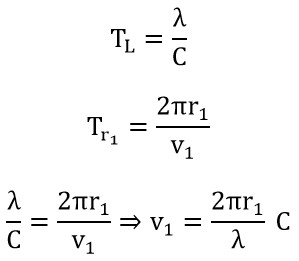
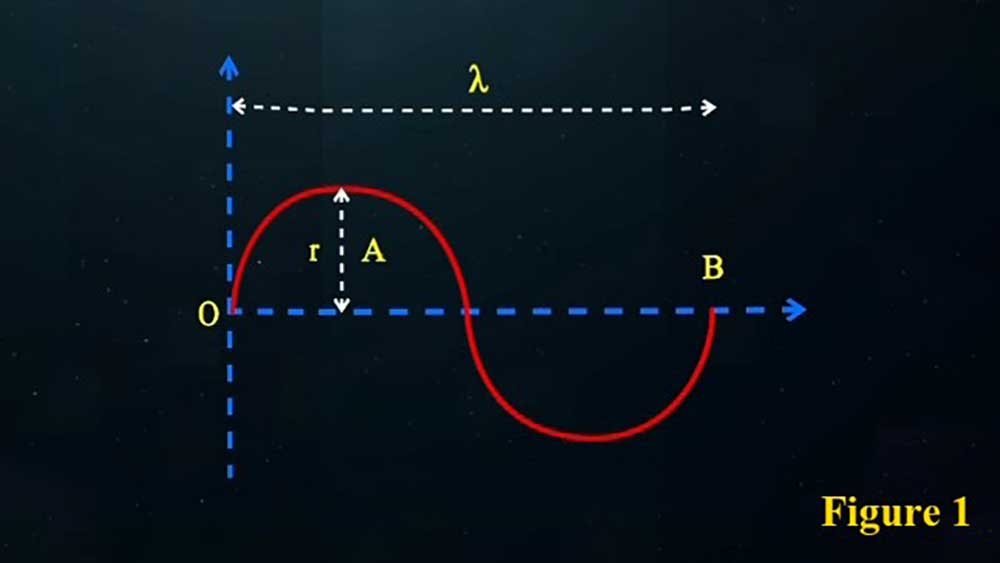
Given that to travel a linear path equal to one wavelength λ, the photon completes one full cycle, we can write:
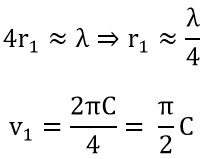
If we want to add the third motion, which is the electron's spin on its own axis, to this motion, we must consider that in the time interval when the photon completes one full cycle around the central axis and travels a distance equal to the circumference of a circle with radius r1, it simultaneously travels the circumference of a smaller circle with radius r2 (due to the electron's spin on its own axis) n times. Therefore, we can write:
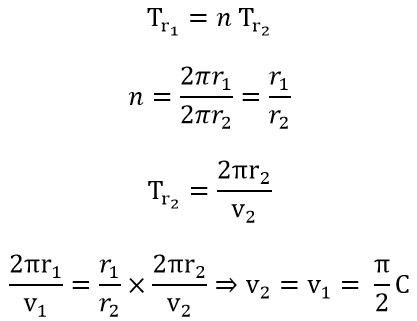
Since the resulting motion is a nested helix, we consider the two rotational motions to be in the same direction and the linear projectile motion to be perpendicular to these two motions. Therefore, the total velocity is obtained from the following equations:

Conclusion:
Emitted photon motion is wave-like as Young’s double-slit experiment have been demonstrated. That must be because of its source motion. The path of a photon emitted from an electron orbiting the atomic nucleus and spinning on its own axis is the sum of a projectile and two rotational motions. Therefore, its total velocity is also the sum of these velocities, which is equal to:
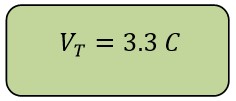
References:
[1] Young, Thomas. " II. The Bakerian Lecture. On the theory of light and colours. " Philosophical transactions of the Royal Society of London 92 (1802): 12-48.
[2] Saleh, Gh. "New Proof of Photon Velocity (V_T= 3.3 C) Utilising the Ever-True Planck Energy Equation and Kinetic Energy Equation in the Universe 2025 Part B." Saleh Theory, 03 May. 2025, https://www.saleh-theory.com/article/a-new-proof-of-photon-velocity-vsubtsub-33-c-utilising-the-ever-true-planck-energy-equation-and-kinetic-energy-equation-in-the-universe-2025-part-b
[3] Saleh, Gh. "New Proof of Photon Velocity (V_T= 3.3 C) Utilising Mathematical Equations, Physical Laws and the Experiments of MIT and Michigan University in the Universe 2025 Part A." Saleh Theory, 26 Apr. 2025, https://www.saleh-theory.com/article/a-new-proof-of-photon-velocity-vsubtsub-33-c-utilising-mathematical-equations-physical-laws-and-the-experiments-of-mit-and-michigan-university-in-the-universe-2025-part-a
[4] Saleh, Gh. "A New Proof of the Constancy of Photon Mass Using Its Initial Energy." Saleh Theory, 06 Mar. 2025, https://www.saleh-theory.com/article/a-new-proof-of-the-constancy-of-photon-mass-using-its-initial-energy
[5] Saleh, Gh. "Discovery of the Hundred-Year-Old Lost Mathematical and Physical Relationship Between the Classical Kinetic Energy of Photons and Planck's Everlasting Experimental Equation in the Universe (Planck-Saleh Energy Equation)." Saleh Theory, 28 Jun. 2024, https://www.saleh-theory.com/article/discovery-of-the-hundred-year-old-lost-mathematical-and-physical-relationship-between-the-classical-kinetic-energy-of-photons-and-plancks-everlasting-experimental-equation-in-the-universe-planck-saleh-energy-equation
[8] Saleh, Gh. "New Uncomplicated Experiment Under Ordinary Conditions (Time, Place, Sunlight, etc.) With Common Tools (Ordinary Lenses and Thermometers) to Demonstrate and Verify the Planck's Experimental Equation." Saleh Theory, 10 Jul. 2024, https://www.saleh-theory.com/article/new-uncomplicated-experiment-under-ordinary-conditions-time-place-sunlight-etc-with-common-tools-ordinary-lenses-and-thermometers-to-demonstrate-and-verify-the-plancks-experimental-equation
[9] Saleh, Gh. "New Discoveries About the Speed of Electromagnetic Waves 2024 Part A." Saleh Theory, 12 Oct. 2023, https://www.saleh-theory.com/article/new-discoveries-about-the-speed-of-electromagnetic-waves-2024-part-a
[10] Saleh, Gh. "New Discoveries About the Speed of Electromagnetic Waves 2024 Part B." Saleh Theory, 30 Oct. 2023, https://www.saleh-theory.com/article/new-discoveries-about-the-speed-of-electromagnetic-waves-2024-part-b
[11] Saleh, Gh. "New Discoveries About the Speed of Electromagnetic Waves 2024 Part C." Saleh Theory, 06 Nov. 2023, https://www.saleh-theory.com/article/new-discoveries-about-the-speed-of-electromagnetic-waves-2024-part-c
[12] Saleh, Gh. "New, Marvelous and Revolutionary Discoveries About Photon." Saleh Theory, 07 Sep. 2023, https://www.saleh-theory.com/article/new-marvelous-and-revolutionary-discoveries-about-photon
[18] Saleh, Gh. "10 Great Reasons for Helical Motion of Photon." APS Meeting Abstracts. 2022.
[21] Saleh, Gh. "Photon has a Constant Rest Mass!." Saleh Theory, 16 Mar. 2018, https://www.saleh-theory.com/article/photon-has-a-constant-rest-mass
[22] Saleh, Gh. "The Unseen World of Photon." Saleh Theory, 16 Jul. 2017, https://www.saleh-theory.com/article/the-unseen-world-of-photon
[23] Saleh, Gh. "A Revolution in Light Theory." Saleh Theory, 11 Apr. 2017, https://www.saleh-theory.com/article/a-revolution-in-light-theory
 Download PDF
Download PDF Articles
